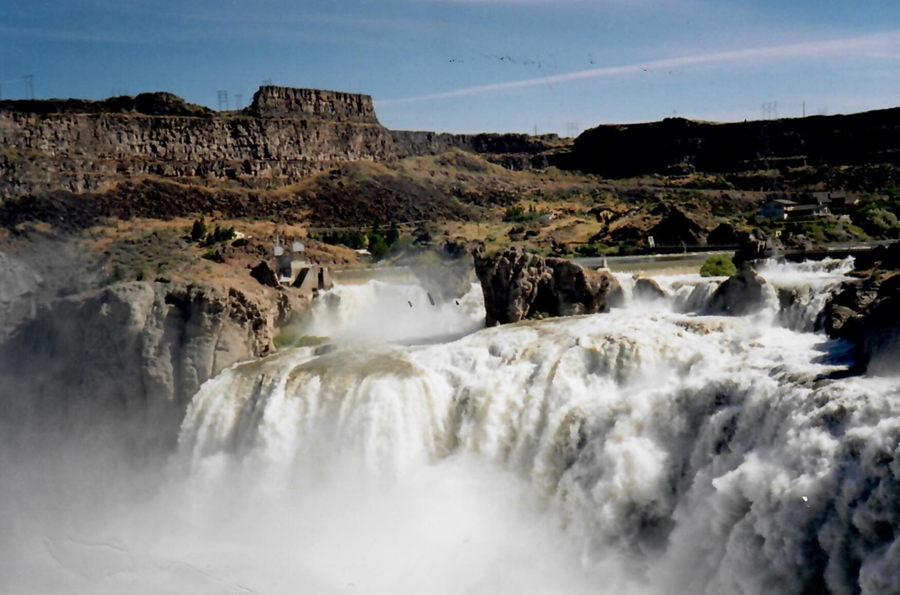Today I learned that giclée (pronounced zhēē-clay) is an English word coined to describe high-quality ink-jet printer art. It was derived in the early 1990s and was based on the French word gicleur, a word from the automotive or mechanical trades meaning jet or spray. I've also learned that to type the accented e used as the fifth letter in giclée using a Windows computer, you must hold down the 'alt' key while entering the ASCII code for é, 0233, using the keyboard's number pad. That letter has what is known as the 'acute accent' and it is pronounced more or less like a long a, ā, in English. Only the number pad works for this. The numbered keys across the top of the keyboard won't work and in fact, seem to do nothing whatever when the 'alt' key is held down. This is in keeping with the universal law, as implemented by Microsoft, that nothing is ever as easy as it should be.
The casual reader may note I
have wasted a good deal of my day learning these few trivial facts and wonder:
Why? I will explain.
But first I must say I do not
find this a waste of my time. I learned something new! What I haven't learned,
yet, is this: Why does giclée use an acute accented e while the French word it
was derived from, gicleur, does not? Such perverse facts do not
increase my understanding of the English-speaking world's interface with the
French way of life.
I began my in-depth research of
this arcane topic after reading an article this morning written by native
Idahoan, Rick Just, in his daily Idaho history blog, Speaking of Idaho.
Rick told of noted 19th-century artist Thomas Moran. Rick tells us that Mr.
Moran was one of the few artists of his time well-known for depicting the scenery
of the Rocky Mountains in still-life works. His media of choice was often
watercolor. One of Mr. Moran's works mentioned by Mr. Just got my attention.
The work, painted by Thomas Moran in watercolor in 1900, is titled Shoshone
Falls on the Snake River, Idaho. The original is now in a museum in Tulsa,
Oklahoma, the legislature of Idaho having failed to appropriate $10,000 to
purchase the work when offered by Mr. Moran's estate after his death, in 1926.
That original is valued at many hundreds of thousands of dollars.
My parents lived less than one
mile from Shoshone Falls in 1950 when I was born in Twin Falls, Idaho. As I
grew up, we often picnicked and played in the park near the top of the falls in
the Snake River Canyon. Rick's article included a link to the work. Clicking
that link, I found a picture of a work of art of which I happen to have a
framed giclée print displayed on the wall in my home.
Here's what I am proud of: My
framed print of Mr. Moran's work is displayed alongside a print of a photograph
of Shoshone Falls that I captured on a Sony digital camera in 1997. The
perspective of the image in the photo is nearly identical to that in Mr.
Moran's work. In the century since Mr. Moran painted Shoshone Falls, the water
flow has been greatly diminished as the Snake River has been dammed upstream
and water has been diverted for municipal, industrial, and agricultural uses.
Mr. Moran's painting shows the falls in tumult with a very heavy flow. In 1997,
I was blessed to be able to capture my image of the falls early in the spring
after an unusually wet winter with heavy snowfall in the mountains. So even the
cascade of the water looks similar in my photograph.
Presented here, for your viewing enjoyment, is an image of the famous (and valuable) 1900 work of art by Mr. Thomas Moran (1837-1926) along with an image of the photograph captured in 1997 by the unknown and unappreciated author of this piece.
 |
| Shoshone Falls on the Snake River, Idaho. Watercolor, 1900, Thomas Moran |
 |
| Shoshone Falls on the Snake River, Idaho. Photograph, 1997, Dan Moyes |
This original photograph is now valued at a quarter of one dollar.
Oh, and after more painstaking research, I have now learned the
reason the acute accented e is used in giclée and not in the French original:
The accented e was added to avoid confusion with the French street slang word giclee which is used to refer to male ejaculate. Now I am
sorry I learned this. Such perverse facts do not increase my understanding of my
world's interface with that of the artist. Thank you, Microsoft Copilot, for
your AI search of this topic to enlighten me.
And thank you, reader, for
your time.

No comments:
Post a Comment